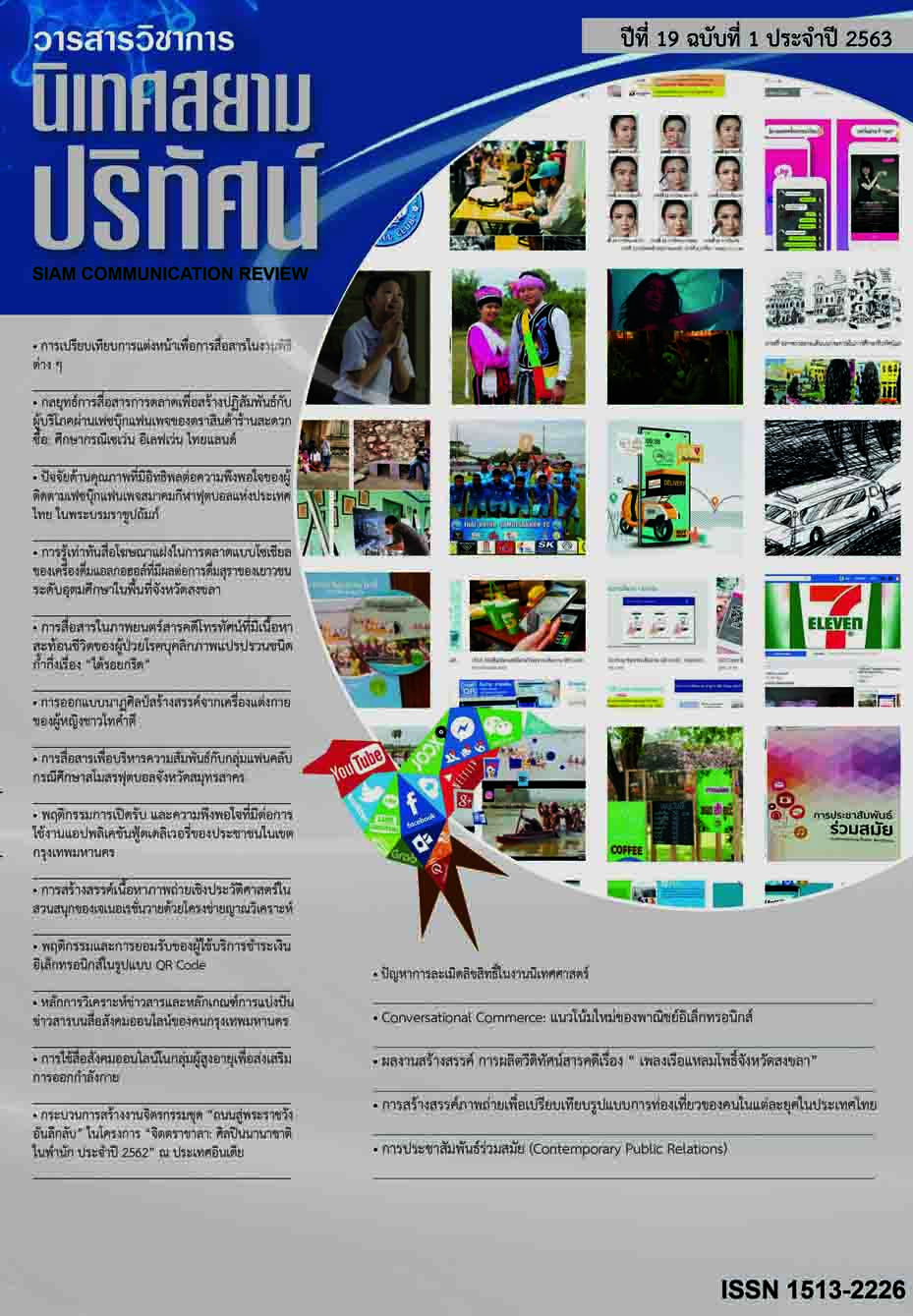Users’ Behaviors and Acceptance of Electronic Payment Services in the Form of a QR Code
Main Article Content
Abstract
The objectives of this study, the researcher examines (1) users’ behaviors and acceptance of electronic payment services in the form of a QR Code. The researcher compares (2) the demographic characteristics of the service users under study. The mixed-methods methodology was used in this research, sample population in the quantitative research consisted of 400 service users in Bangkok Metropolis who used electronic payment in the form of a QR Code using the technique of purposive sampling. A questionnaire with the reliability of 0.852 was
used to collect data. The sample population in the qualitative research consisted of twenty service users in Bangkok Metropolis who used electronic payment in the form of a QR Code. These were housewives, company employees, students, and business owners. Data were collected using focus group discussions based on the research questions. Data were analyzed using frequency, percentage, mean, and standard deviation. The technique of one-way analysis of variance (ANOVA) was also employed.
Findings are as follows:
1. The service users exhibited the electronic payment behavior in the form of a QR Code through the Bangkok Bank at the highest level. They transferred the money from bank accounts and purchased products online by paying 2,001-2,500 baht per time because it was a convenient way for paying for the buying-selling of products. The average frequency in the service use was more than ten times per week. They exhibited an acceptance of electronic payment in the form of a QR Code overall at the highest level (M = 4.30). Also at the highest level were the aspects of attitude (M = 4.41); trust in the system (M = 4.34); perceived risk in use (M = 4.30); and perceived ease of use (M = 4.30). The aspect of the perceived benefits from use was at a high level (M = 4.17).
2. The service users under study who differed in gender, age, educational level, occupation, monthly income, and channels for the payment for products and services exhibited no differences in their acceptance of electronic payment in the form of a QR Code. The focus group discussions showed that the key informants exhibited acceptance of electronic payment in the form of a QR Code by transferring money from bank accounts to buy products and services online. They were of the opinion that payment using a QR Code could reduce difficulties in the payment. It was in consonance with their life ways. They trusted in the confirmation of transactions and technology in payment using a QR Code.
Article Details
References
กิติมา สุรสนธิ. (2541). ความรูทางการสื่อสาร. กรุงเทพฯ: โรงพิมพมหาวิทยาลัยธรรมศาสตร.
พรรณทิพา แอดํา. (2549). การยอมรับเทคโนโลยี สารสนเทศของข้าราชการสำนักงานปลัดกระทรวงพลังงาน (รายงานการวิจัย). ชลบุรี: มหาวิทยาลัยบูรพา.
เยาวพา ชูประภาวรรณ. (2547). การยอมรับนวัตกรรมใหม่. กรุงเทพฯ: โอเดียนสโตร์.
ศิริวรรณ เสรีรัตน์, ศุภร เสรีย์รัตน์, องอาจ ปทะวานิช และปริญ ลักษิตานนท์. (2541). การบริหารการตลาดยุคใหม่. กรุงเทพมหานคร: บริษัท ธีระฟิลม์ และไซเทกซ์ จำกัด.
ภาษาอังกฤษ
Cronbach, L. J. (1970). Essential of Psychological Testing (3rd ed.). New York: Harper Row. Stufflebeam.
Foster, G. M. (1973). Tradition Societies and Technological Change. New York: Harper and Row Publishers.
Rogers, E. M. (1962). Diffusion of Innovation. New York: Free Press.
Rogers, E. M., & Shoemaker, F. F. (1971). Communication of Innovation. New York: Free Press.
ออนไลน์
ธนาคารแห่งประเทศไทย. (2561). ขั้นตอนในการใช้บริการ QR Code. เข้าถึงได้จาก https://www.bot.or.th


